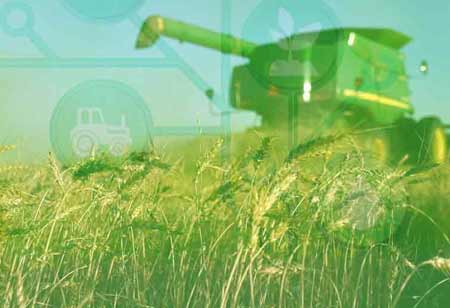Thank you for Subscribing to Agri Business Review Weekly Brief
Modern Sensor Technologies In Agriculture.
Technology has started to play a vital part in the agricultural system's sustainable intensification, as it reduces labor time and costs while also enhancing agricultural practices

By
Agri Business Review | Thursday, December 01, 2022
Stay ahead of the industry with exclusive feature stories on the top companies, expert insights and the latest news delivered straight to your inbox. Subscribe today.
Technology has started to play a vital part in the agricultural system's sustainable intensification, as it reduces labor time and costs while also enhancing agricultural practices
Fremont, CA: Technology is essential in the agricultural system's long-term sustainability. Scientists have found that utilizing sensors in agricultural farming has greatly enhanced growth and yield while reducing production expenses.
The application of sensors in agriculture and other industries has risen fast as the Internet of Things (IoT) technology has progressed. Temperature, humidity, soil content, soil moisture, soil pH, light intensity, and pathogenic infestation are all sensors utilized in the agricultural system. Moreover, these sensors can track different stages of plant development and the settings in which they are produced.
Some of the inventions in agriculture sensors
Location sensors
Longitude, latitude, and altitude, or topographic qualities, are utilized by location sensors to identify longitude, latitude, and altitude, which are helpful in precision agriculture positioning. To triangulate a position, a minimum of three satellites are normally necessary. This sensor is utilized in vineyards to improve crop development and yield patterns. They're also beneficial for deciphering yield and weed maps.
Electrochemical sensors
This sensor followed up on the soil's pH and nutrient concentration. In addition, the sensor electrodes help detect specific ions in the soil, which is utilized to determine the soil's ionic profile.
Optical sensors
This sensor uses light to identify diverse soil qualities. Optical sensors work according to measuring different frequencies of light reflectance in the mid-infrared, polarised, and near-infrared light spectrums. Vehicles, drones, and satellites can all be equipped with optical sensors. Plant color and soil reflectance are recorded, which can be treated and evaluated for scientific purposes. Optical sensors can also decide the amount of organic matter and moisture in the soil.
Mechanical sensors
This sensor is utilized to determine how compact the soil is. The probe is placed into the soil, and load cells and strain gauges are utilized to measure the forces acting.





